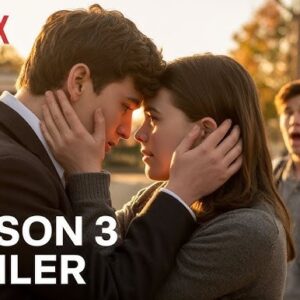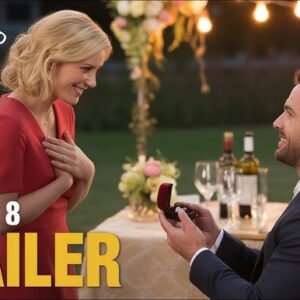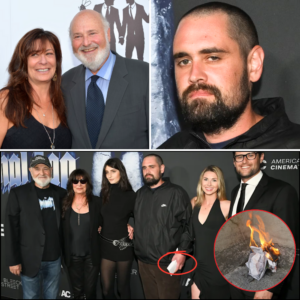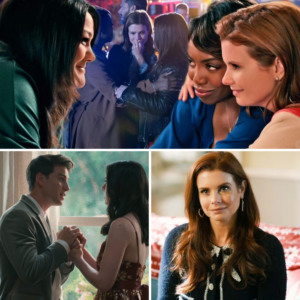Imagine the sterile hush of a London hospital room on a crisp September evening in 1984. The air is thick with anticipation, the faint beeps of monitors underscoring the miracle about to unfold. Princess Diana, the world’s most adored royal, lies exhausted after nine grueling hours of labor—without a single painkiller to dull the edge. Her husband, Prince Charles, heir to the British throne, stands by, his face a mask of princely composure. But as the newborn’s cries pierce the room, a shadow falls. Charles leans in, peers at the tiny bundle, and utters words that will echo through history: “Oh God, it’s a boy.” Then, with a twist of the knife, “And he’s even got red hair.” In that instant, a fairy-tale romance crumbles into dust. But what if I told you this wasn’t just a offhand remark? It was the explosive climax to a secret Diana had guarded for months—a heartbreaking ploy to cling to her husband’s fleeting affection. As we unravel this royal riddle, you’ll discover how one woman’s desperate bid for love ignited the slow burn that consumed the most watched marriage of the century.
To grasp the depth of this deception, we must rewind to the glittering facade of Diana and Charles’s union. Their 1981 wedding was the stuff of dreams: a blushing 20-year-old kindergarten teacher swept into the arms of a dashing 32-year-old prince, watched by 750 million people worldwide. Billions of fairy lights couldn’t hide the cracks, though. Whispers of Charles’s undying love for Camilla Parker Bowles, his former flame, had already begun to swirl. Diana, young and idealistic, plunged into royal life with hope, but the honeymoon soured fast. By the time Prince William arrived in 1982, the couple’s relationship was a battlefield of jealousy, isolation, and unmet expectations. Charles, ever the traditionalist, had his heir. Now, he yearned for a spare—and ideally, a daughter to round out the perfect royal portrait.
Enter the summer of 1984. Diana, radiant and blooming with her second pregnancy, found herself in an unexpected oasis of marital bliss. For those precious months, the storm clouds parted. Charles doted on her, their conversations flowed like never before, and intimacy reignited. Diana later confided that in the six weeks leading up to the birth, they were “very, very close to each other—the closest we’ve ever, ever been and ever will be.” It was a golden interlude, a fragile bubble where Diana dared to dream of salvaging their love. But lurking beneath this harmony was a ticking bomb: the baby’s gender.
Ultrasounds in the 1980s weren’t as routine as today, but Diana had one—and it revealed a truth that could shatter their fragile peace. The child was a boy. Charles, however, was fixated on the idea of a girl. He’d openly mused about it, painting pictures of tea parties and ballet lessons, a daughter to soften the edges of his rigid world. “He wanted two children, and he wanted a girl,” Diana recalled. Knowing this, she made a calculated choice: silence. “I knew Harry was going to be a boy because I saw on the scan,” she admitted. “And I didn’t tell him.” It was a secret born of desperation, a wife’s gamble to preserve the affection she’d finally won. By keeping the truth hidden, Diana hoped to extend their harmonious phase, shielding Charles from disappointment until the inevitable moment. In her mind, it was an act of love—or perhaps self-preservation—in a marriage where she constantly fought for scraps of his attention.
As the due date approached, the palace buzzed with speculation. The public adored Diana’s maternity glow; she was the epitome of graceful expectancy, attending polo matches and charity events with her signature poise. Behind closed doors at Kensington Palace, the couple shared quiet evenings, Charles perhaps reading aloud or discussing names. Diana floated names like Victoria or Alexandra for a girl, all while knowing the truth nestled in her womb. It was a high-stakes charade, one that allowed their bond to flourish unchecked. Friends noticed the shift—Diana seemed happier, more secure. Charles, oblivious to the deception, basked in the anticipation of his dreamed-of daughter. For a brief, shining period, the Waleses appeared united, a beacon of royal stability in an era of excess.
But fairy tales have twists, and this one turned tragic on September 15, 1984, at the Lindo Wing of St. Mary’s Hospital. Diana’s labor was intense, a testament to her quiet strength—she refused epidurals, enduring the pain with gritted teeth. When the baby emerged at 4:20 p.m., weighing 6 pounds, 14 ounces, the room should have erupted in joy. Instead, Charles’s reaction landed like a slap. Peering at his second son—christened Henry Charles Albert David, but forever Harry to the world—he couldn’t mask his dismay. “Oh God, it’s a boy,” he sighed, his voice laced with what Diana perceived as profound disappointment. Then came the jab about the red hair, a trait inherited from Diana’s Spencer family lineage—her siblings shared the fiery locks. To Charles, it was perhaps a clumsy attempt at humor, but to Diana, it was a dagger to the heart. Red hair? As if the boy’s very appearance was a flaw, a reminder of her side of the family rather than the Windsors’ stoic brunette.
The fallout was immediate and visceral. Diana, already vulnerable in the haze of postpartum exhaustion, felt her world shatter. “Something inside me closed off,” she later revealed. That comment, innocuous to outsiders, symbolized everything wrong in their union: Charles’s unattainable expectations, his emotional distance, and the shadow of Camilla looming large. Diana had poured her soul into winning his love during those pregnancy months, only for it to evaporate in the delivery room. “Then, suddenly, as Harry was born, it just went bang, our marriage—the whole thing went down the drain,” she said. The secret she’d harbored, meant to protect their bond, instead amplified the betrayal. Charles, sensing the chill, turned away—not just from her, but from the family unit. Whispers suggest he confided to aides that with an “heir and a spare,” his duties were done, freeing him to rekindle his affair with Camilla, which had simmered since the late 1970s.
The drama didn’t end in the hospital. At Harry’s christening in December 1984, held at Windsor Castle amid pomp and circumstance, the undercurrents boiled over. Charles, perhaps still smarting from the surprise, pulled Diana’s mother, Frances Shand Kydd, aside. “We were so disappointed—we thought it would be a girl,” he lamented. Frances, a no-nonsense Scot, fired back: “You should realize you are lucky to have a child that’s normal.” The exchange was a turning point; Diana noted that from then on, Charles’s “shutters came down” on her mother, their relationship forever strained. It was a microcosm of the royal family’s dysfunction—polite surfaces hiding raw wounds. For Diana, it confirmed her fears: Charles’s disappointment wasn’t fleeting; it was a rejection of Harry, of her, of their shared future.
In the years that followed, the marriage unraveled like a poorly knit sweater. The 1980s gave way to the infamous “War of the Waleses,” a tabloid frenzy of leaked tapes, affairs, and public breakdowns. Diana threw herself into charity work, becoming the “People’s Princess” with her campaigns against landmines and AIDS stigma. Charles, meanwhile, retreated into his passions—gardening, architecture, and Camilla. Harry, the “spare” caught in the crossfire, grew up in the shadow of this schism. Ironically, in his early years, he was closer to his father than William, sharing Charles’s love of the outdoors and polo. But the seeds of alienation were sown early. Harry’s memoir Spare, released decades later, would revisit these wounds, painting a picture of a boy yearning for paternal approval amid the ruins of his parents’ love.
Why did Diana’s secret cut so deep? It wasn’t just about gender; it was a symbol of her endless struggle for Charles’s heart. From their mismatched courtship—where she was the naive ingenue and he the worldly bachelor—to the power imbalances of palace life, Diana fought tooth and nail for equality in affection. Keeping Harry’s gender hidden was her ultimate act of devotion, a shield against the inevitable storm. Yet, it backfired spectacularly, exposing the fragility of their bond. Psychologists might call it a classic case of avoidance coping: delaying pain only magnifies it. In royal terms, it was a reminder that even crowns can’t mend broken hearts.
Fast-forward to today, and the echoes of that delivery room linger. Harry, now 41 and living in California with his own family, has forged a path far from the throne—much like his mother’s rebellious spirit. His relationship with Charles remains complicated, strained by years of public feuds and private grievances. Camilla, once the “other woman,” is now Queen Consort, a plot twist Diana could never have foreseen. Yet, in the annals of royal history, this secret stands as a poignant testament to human vulnerability. Diana’s gamble wasn’t for power or prestige; it was for love, pure and aching.
As we reflect on this heartbreaking chapter, one question haunts: What if Diana had told the truth sooner? Would the marriage have survived, or was it always doomed? The red-haired prince who entered the world amid disappointment grew into a man who champions mental health and vulnerability—perhaps the ultimate irony. Diana’s secret, once a whisper in palace corridors, now screams a universal truth: In the quest for love, even princesses play dangerous games. And sometimes, the crown weighs heaviest when the heart breaks.




